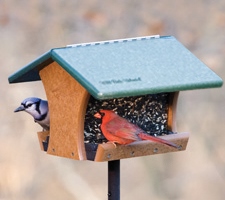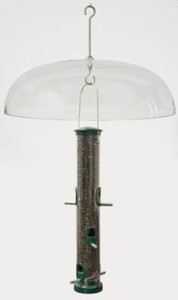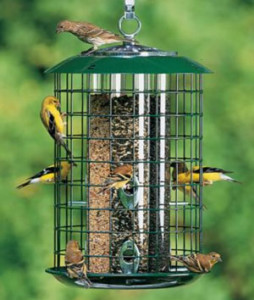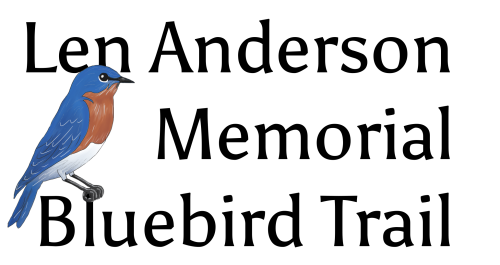It’s February and that means many things to the bird enthusiasts. First, The Great Backyard Bird Count is fast approaching. The Cornell Lab of Ornithology and National Audubon Society launched the event in 1998. It was the first online citizen-science project to collect data on wild birds and to display results in near real-time.
The event is February 12-15, 2016 and all you have to do to participate is sign up online and count the number and kind of birds you see for at least 15 minutes on one or more days of the count. You can count from any location, anywhere in the world! If you are new to this event, you can register online.
Many participants choose to count from their own backyards, especially if they have one or more birdfeeders filled for their avian visitors. That leads us to a second event in February, National Bird Feeding Month.
Enacted to raise awareness of the needs of our feathered friends during the winter, National Bird Feeding Month fits perfectly with The Great Backyard Bird Count. During the cold winter months, wild birds have greater difficulty finding food to sustain them. Food supplies are low due to the reduced vegetation, lack of insects and the sometimes frozen ground. You can help them out by providing feeders filled with appropriate seed, until spring arrives.
What is the perfect birdfeeder? Well, that depends on what you want to attract. So, here is a little guide to help you decide.
For the Bird in Mind
Determine what type of bird you want to feed. You may have seen, or heard, particular species in your area. If you aren’t familiar with any, you can find out what they are with The Cornell Lab of Ornithology Bird Guide.
Different species like different foods, and they like to eat in specific manors. Some forage on the ground for seed like doves, while others perch on branches and pick seeds or berries like chickadees. You will want a feeder that allows the bird to feed as natural as possible.

Feeder types (left to right): platform feeder with Mourning Doves, tube feeder with American Goldfinch, suet feeder with Downy Woodpecker.
Doves will want to scratch for seed, so a platform feeder will be best for them. Perching birds will enjoy a hopper or tube feeder, with appropriately sized posts to perch on. Woodpeckers scale the sides of trees and probe for insects. You may have heard that a suet feeder is best for them, but simply hanging a small basket of suet might not attract them. They like to have support while eating, so you will want to have a tail prop attached to the feeder.
Easy to Fill
The feeder is nothing without the food. When it comes time to fill it, you want to do it quick and easy. Some feeders can be difficult to open or cumbersome to pour your favorite seed mixture into. Look for feeders that have strong hinges with wide openings, or easily removed top caps.
We recommend you place your hanging feeders out of reach from predators, but be mindful of how to fill it. Shepherd hooks are a good alternative to hanging from trees. If you plan to mount your feeder on a post, make sure you don’t mount it too high for you to reach, and have a sturdy stepstool or ladder at the ready.

Hopper feeder with latched top is easy to fill with seed and easy to clean. Spring loaded perch is an extra deterrent for squirrels.
Easy to Clean
Many will fill their birdfeeders repeatedly and forget that they need cleaning. Wet weather can make seed moldy and insects might find shelter under the roof. Give your feeders a thorough cleaning before the first use and regularly after that.
Make sure you get a feeder made of materials that allow you to clean it well. Some are wood, and though well made, they can be difficult to clean completely. They also might succumb to insect pests, like Carpenter Bees.
Large openings on birdfeeders are also easier for cleaning. If your feeder does happen to have a smaller opening than preferred, or holes difficult to clean, consider buying a sturdy bottlebrush as an effective tool.
Pest Protection
As I mentioned, insects may infest wood birdfeeders. Many feeders on the market look just like our classically designed feeders but made with sustainable and sturdier materials. Consider recycled milk jug plastic as an alternative to wood. Easier to clean and the bugs don’t like it.

Classic hopper feeder made from recycled plastic milk jugs.
Insects aren’t the only pests you need to consider. Squirrels are a mixed bag of nuts, some folks like them and some folks like them dead. If you want squirrels to leave your feeder alone, consider a baffle on post mounted feeders or shepherd hooks. Squirrels can jump 4 to 5 feet vertically and 8 to 10 feet between objects. You also may want to use dome baffles above bird feeders.

Tube feeder with squirrel baffle.
A “squirrel proof” feeder is another option. These are usually metal with weighted triggers that block access to the food. Try to get a feeder without any thin plastic; it will not prevent a squirrel from chewing through it.

A tube feeder with wire mesh can reduce the number of squirrels and starlings eating the seed.
Purchase a feeder with a guard, or wire mesh around it. You can also install one around your existing feeders. This mesh, with its small holes, prevents the squirrels from getting to close to your birdie’s buffet. It will also limit larger birds from emptying the feeder before the smaller birds get a chance to eat.
If you don’t mind the squirrels as much as others do, you can always just offer them a tasty snack away from the feeders. They can sit and eat nuts and corn while the birds feed from the feeder. There is a large market of products that squirrels will enjoy, and some are entertaining to observe.

A comical feeder just for the squirrels.
Lastly, make sure you position your feeder near safe areas for the birds to hide from stray cats and birds of prey. Various trees and/or shrubs are a simple and beautiful shelter in between feeder visits. Black-capped Chickadees enjoy selecting a seed from the feeder and then alighting on a nearby branch to crack it open and eat it.
You can find large selections of feeders at your local hardware store and at numerous sites online. I recently purchased a feeder from Wild Birds Unlimited. The Cardinals, Mourning Doves, and House Finches use if frequently.
Don’t Forget the Seed
Once you find the right feeder, fill it with the right food. Black oil sunflower seed is loved by many species and easy to find in stores. You can buy it with nuts mixed in for use in hoppers and platform feeders. Niger (Thistle) seed is good for tube feeders, especially for American Goldfinches. It is also available as a Finch mix, with sunflower chips mixed in. Another nice seed selection is Safflower seed. Sunflower-eating birds love Safflower, yet blackbirds, grackles and squirrels typically don’t. You can offer Safflower in hopper, platform or tube feeders.
With a little research and the right selection, your yard can become a haven for wild birds, especially in the winter. If you feed them, they will come.


